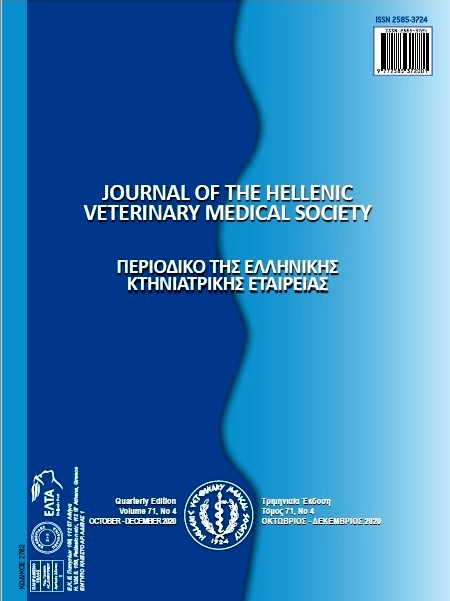Investigation of the relationship of apelin hormone response with some physiological parameters in Maedi-Visna infected sheep

Abstract
In this study, the objective was to assess the serological characteristics of sheep, during lactation and pregnancy periods, and rams belonging to the Red Karaman and White Karaman–Kangal race infected with maedi-visna infection and body condition score (BCS) of ≤2, 3- 3.5 and ≥4 (high) and to analyse the relationship between the level of apelin and its secretion. Apelin level in the blood serum samples obtained from the jugular veinof the sheeps was determined using ELISA method. As a result of the analyses, it was determined that the level of apelin was statistically different between the races; between lactating sheep and pregnant sheep; and sheep and rams. There was no difference between the BCS groups (p > 0.05). Race and sex interaction as well as race, sex and BCS triple interaction effects were found significant (p < 0.05). It was observed that the sheep belonging to the White Karaman–Kangal race were 18 times more likely to be infected with the virus. A decrease in apelin level was observed in the sheep with infection, and it was found that the risk of infection was 0.37 times higher in rams than in lactating sheep (p < 0.05).
Article Details
- How to Cite
-
BAYRAKTAR, B., SAIT, A., TAKMA, Ç, & TEKCE, E. (2021). Investigation of the relationship of apelin hormone response with some physiological parameters in Maedi-Visna infected sheep. Journal of the Hellenic Veterinary Medical Society, 71(4), 2539–2548. https://doi.org/10.12681/jhvms.25934
- Issue
- Vol. 71 No. 4 (2020)
- Section
- Research Articles

This work is licensed under a Creative Commons Attribution-NonCommercial 4.0 International License.
Authors who publish with this journal agree to the following terms:
· Authors retain copyright and grant the journal right of first publication with the work simultaneously licensed under a Creative Commons Attribution Non-Commercial License that allows others to share the work with an acknowledgement of the work's authorship and initial publication in this journal.
· Authors are able to enter into separate, additional contractual arrangements for the non-exclusive distribution of the journal's published version of the work (e.g. post it to an institutional repository or publish it in a book), with an acknowledgement of its initial publication in this journal.
· Authors are permitted and encouraged to post their work online (preferably in institutional repositories or on their website) prior to and during the submission process, as it can lead to productive exchanges, as well as earlier and greater citation of published work.




